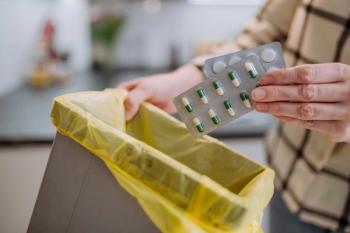
Telehealth Improves Access to Pharmacists for Medically Underserved Patients
An examination of how telehealth services for medically underserved patients in rural areas improve access to pharmacists for chronic care management.
Through telehealth services, medically underserved patients in rural Florida have been able to effectively access ambulatory care pharmacists and student pharmacists during the pandemic, according to a commentary published in Preventing Chronic Disease.
With the coronavirus disease 2019 (COVID-19) pandemic, health care professionals are tasked with finding alternative ways to deliver care to patients who may be vulnerable to poor health outcomes. As in-person interactions may be limited, the use of technologies such as telehealth through virtual and telephone medical therapy management (MTM) can help improve care for these vulnerable patients.
The initiative focused on the Northwest Florida population, which is largely rural and consists of medically underserved individuals who have limited access to medical care for various reasons. At the Federally Qualified Health Center (FQHC), one of the community health centers in the area, 2 pharmacist faculty members from Florida Agricultural and Mechanical University College of Pharmacy and Pharmaceutical Sciences, Institute of Public Health, implemented telehealth services during the pandemic to continue care for patients in the ambulatory care setting.
According to the authors of the commentary, each pharmacist has a cohort of patients to which they provide medication-related recommendations and counseling, as well as an established MTM program that focuses on cardiovascular disease and stroke prevention among the medically underserved population.
For the MTM program, student pharmacists and pharmacists perform chart reviews, assess laboratory values, identify barriers to medication adherence, provide pharmacologic and nonpharmacologic counseling, and make medication-related recommendations to referring providers. Patients are asked about their health literacy level surrounding their medications during each MTM interview.
During the pandemic, the FQHC clinic designed telehealth encounters to allow for continued patient access to care. The clinic provided patients with tablets, and health care professionals used laptops with preloaded Zoom video software for telehealth communication.
The clinic also allowed for student pharmacists on advanced pharmacy practice experience rotations to assist pharmacists in interviewing patients and providing medication-related recommendations via telehealth, under the pharmacist’s supervision. This can provide alternative ways for institutions to incorporate student pharmacists, as personal protective equipment (PPE) shortages have limited student interactions during the pandemic.
The authors also noted that, in addition to gaining experience in telehealth services, student pharmacists at another Florida clinic assisted with curbside prescription pickup and counseling sessions; however these services required students to wear PPE and practice social distancing.
With COVID-19 affecting many communities, telehealth services can greatly improve patient access to care, especially in medically underserved rural populations.
“It is imperative that pharmacists, student pharmacists, and other health care professionals continue to adapt to these new technologies and familiarize themselves with the laws governing their practice to deliver the same standard of care to improve health outcomes for their patients during the pandemic,” the authors concluded.
Reference
Como M, Carter CW, Larose-Pierre M, et al. Pharmacist-led chronic care management for medically underserved rural populations in Florida during COVID-19 pandemic. Preventing Chronic Disease. 2020. Doi:
Newsletter
Pharmacy practice is always changing. Stay ahead of the curve with the Drug Topics newsletter and get the latest drug information, industry trends, and patient care tips.
























































































































